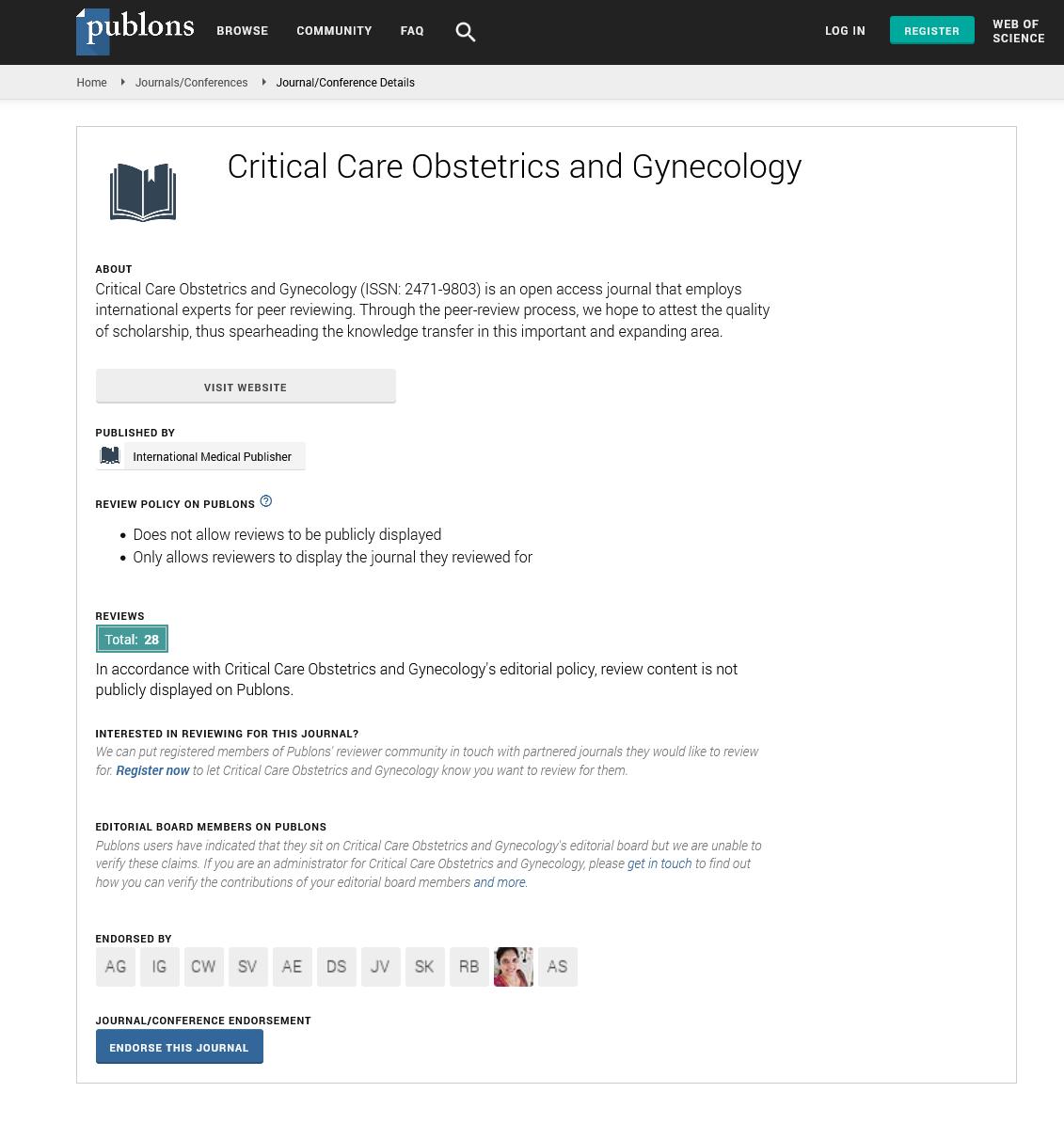ISSN : 2471-9803
Critical Care Obstetrics and Gynecology
Comparative study of treatment response and toxicity of four field box technique versus two field technique in locally advanced carcinoma cervix
European Congress on Vaccines & Vaccination and Gynecologic Oncology
October 26 -27, 2018 Budapest , Hungary
Roshani Shrestha
B & B Hospital, Nepal National Academy of Medical Science (NAMS), Nepal
Posters & Accepted Abstracts: Crit Care Obst & Gyne
DOI: 10.21767/2471-9803-C1-003
Abstract
Background: External beam radiotherapy plays a pivotal role in locally advanced carcinoma cervix. EBRT treats the whole pelvis including the primary tumor along with the regional lymph nodes. Conventionally, EBRT planning is based on standard bony landmarks using X-rays and can be delivered by anterior–posterior and posterior–anterior (AP-PA) parallel opposed fields or the four field box technique. AP-PA field technique provides good coverage to the target volume. Four field box technique with parallel opposed AP-PA fields and two lateral opposed fields although has better dose distribution and decrease normal tissue toxicity, it is time consuming. EBRT by AP-PA two field techniques is generally used in our center due to less manpower and resources and huge load of patients. But, pelvic radiotherapy by 4 field portals has been proven by the trials that it has better tumor response. So, the objective of this study was to compare the tumor response and acute hematological and non-hematological toxicities between the two techniques. Methodology: After fulfilling the eligibility criteria, patients were randomized into two groups of chemoradiotherapy. One group received radiation by AP-PA two field techniques and the other group by 4 field box technique. Randomization was done alternatively to group A and group B based on the patients visit to OPD. The patients were categorized as group A for the ones receiving treatment by AP-PA two field technique and group B for the ones receiving treatment by 4 field box technique. Chemotherapy regimen was the same for the two groups. Treatment response and toxicities were evaluated after the completion of treatment and compared between two groups. Results: 100% of enrolled patients received planned treatment. The total duration of treatment in both the groups was 23 days. Loco- regional control with complete remission was 63.3% in group A vs. 73.3% in group B (p=0.405). Acute toxicities of grade 1 and grade 2 were seen more in group A compared to group B, nausea (63.3% vs. 56.7% p=0.141), vomiting (13.3% vs. 20% p=0.234), diarrhea (10% vs. 6.7%), radiation dermatitis (3.3% vs. 0%). Hematological toxicities like anemia, thrombocytopenia and leucopenia were observed more in group A than group B. Conclusion: Both two and four field box techniques are equally effective and feasible as statistically insignificant difference in the response rate and acute toxicities was observed in the two groups
Biography
E-mail:
roshanishrestha2@gmail.com
Google Scholar citation report
Citations : 148
Critical Care Obstetrics and Gynecology received 148 citations as per Google Scholar report
Critical Care Obstetrics and Gynecology peer review process verified at publons
Abstracted/Indexed in
- Google Scholar
- China National Knowledge Infrastructure (CNKI)
- WorldCat
- Publons
- Geneva Foundation for Medical Education and Research
- Secret Search Engine Labs
Open Access Journals
- Aquaculture & Veterinary Science
- Chemistry & Chemical Sciences
- Clinical Sciences
- Engineering
- General Science
- Genetics & Molecular Biology
- Health Care & Nursing
- Immunology & Microbiology
- Materials Science
- Mathematics & Physics
- Medical Sciences
- Neurology & Psychiatry
- Oncology & Cancer Science
- Pharmaceutical Sciences
